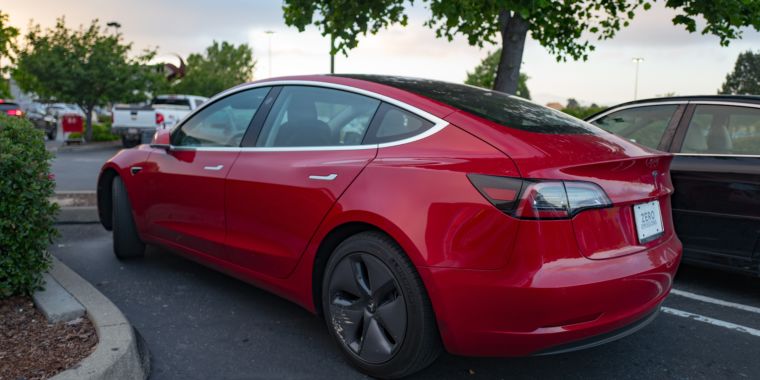CyberPanda
Banned
In recent weeks, Tesla has been pushing out a new version of Autopilot with automatic lane-change capabilities to Model 3s—including one owned by Consumer Reports. So the group dispatched several drivers to highways around the group's car-testing center in Connecticut to test the feature. The results weren't good.
The "latest version of Tesla's automatic lane-changing feature is far less competent than a human driver," Consumer Reports declares.
Tesla introduced its Navigate on Autopilot feature a few months ago, but at first, it would ask the driver to confirm lane changes. More recently Tesla has given drivers the option to have Autopilot initiate lane changes without confirmation. But CR's reviewers argue that feature isn't ready for prime time.
“It’s incredibly nearsighted," said CR's Jake Fisher. "It doesn’t appear to react to brake lights or turn signals, it can’t anticipate what other drivers will do, and as a result, you constantly have to be one step ahead of it.”
Tesla vehicles have a tendency to cut off other drivers when making lane changes, according to CR's tests. After changing lanes in heavy traffic, the Model 3 "often immediately applies the brakes to create space behind the follow car—this can be a rude surprise to the vehicle you cut off,” Fisher said.
CR found that the Model 3's rear cameras didn't seem able to see very far behind the vehicle. Autopilot has forward-facing radar to help detect vehicles ahead of the car and measure their speed, but it lacks rear-facing radar that would give the car advance warning of vehicles approaching quickly from the rear. The result: CR found that the Model 3 tended to cut off cars that were approaching rapidly from behind.
The vehicle also violated some Connecticut driving laws, the testers found. "Several CR testers observed Navigate on Autopilot initiate a pass on the right on a two-lane divided highway," writes CR's Keith Barry. "We checked with a law enforcement official who confirmed this is considered an 'improper pass' in Connecticut and could result in a ticket."
The vehicle also failed to move back over to the right lane after completing a pass as required by state law, CR reports.
Automatic lane changes are a step toward full self-driving
Ultimately, driving with Autopilot's automatic lane-changing feature is "much harder than just changing lanes yourself," Fisher said. "Using the system is like monitoring a kid behind the wheel for the very first time. As any parent knows, it’s far more convenient and less stressful to simply drive yourself."
CR's findings are significant because automatic lane-changing represents an important step in Tesla's plan to develop fully self-driving cars by gradually adding capabilities to its existing driver assistance technology.
Until recently, Autopilot offered roughly the same capabilities as other automakers' offerings. Autopilot would keep the car in its lane and match the speed of the vehicle ahead. But like other products on the market, it would rely on the human driver to execute more-complex maneuvers.
Tesla's plan is to have its software gradually take over more and more functions from the human driver. This lane-changing technology is Tesla's first big move in this direction. If it goes well, Tesla is planning to add other capabilities—like stopping at stoplights and executing turns at intersections—in the coming months.
But if Autopilot struggles to handle lane changes as well as a human driver, it may be premature to roll out additional capabilities.
Another challenge Tesla will face as it rolls out more sophisticated capabilities is laws that vary by country, state, or even municipality. Different states have subtly different laws about when cars are allowed to drive in the left lane or pass on the right, and there's going to be even more variation once Autopilot starts navigating turns, roundabouts, and other complex situations.

Consumer Reports: Latest Autopilot “far less competent than a human”
Automatic lane-change feature cuts drivers off, breaks Connecticut law, CR finds.

Tesla's Updated Navigate on Autopilot Requires Significant Driver Intervention
Consumer Reports tested the latest version of Tesla's Navigate on Autopilot, which offers automatic lane changes, and came away with serious concerns.
www.consumerreports.org

